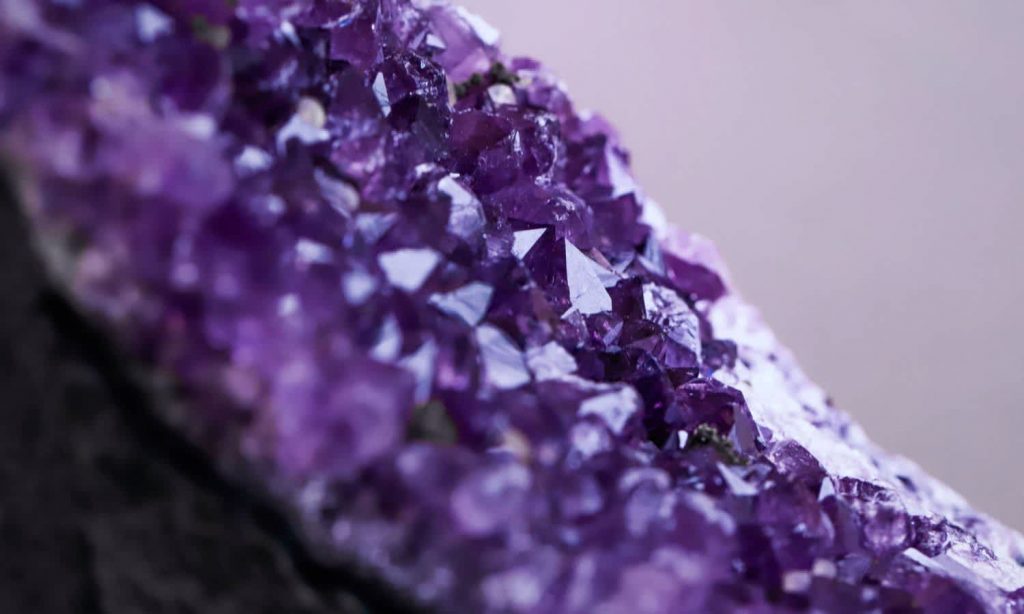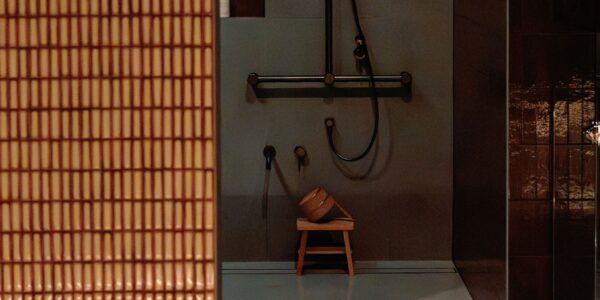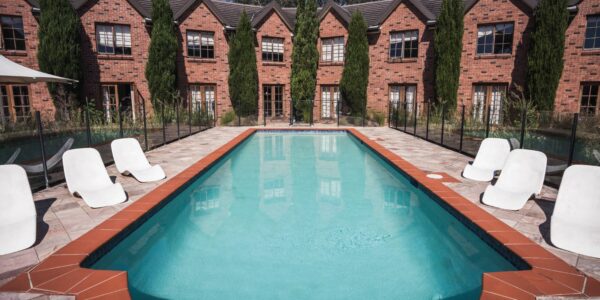No matter what you may think about crystals — holistic healing, pseudoscience or somewhere in between — there’s no denying their popularity and prominence. In fact, they’ve been used for millennia, dating back to Ancient Egypt, for both healing and ritualistic purposes. It’s still practised by many cultures today: Look at the intertwining of Native Americans and turquoise, or that Vedic crystal practices are still very much alive in India.
Once seen as ‘New Age’, they’ve steadily been rising in popularity, with a surge seen throughout the early 2010s. In 2017, Fast Company reported that there was a 40% increase in Google searches for “crystal healing” in the four years prior; “crystal shops near me” queries spiked 35% between 2013 and 2017. In fact, you’ve probably read about the benefits of jade or crystal rollers.
In the age of coronavirus? Well, Bloomberg reports that “the market for crystals is outshining diamonds” — there’s a reason the crystal industry is reputed to be worth over $1 billion. In fact, the founder of Melbourne-based crystal shop Stoned Crystals, Ashley Bellino, has seen an increase in customers over the last 12 months, “due to the pandemic and the need for people to find hope and calibrate”. We even flagged them as part of the top five wellness trends for 2021.
And now, the much-maligned practice that has crossed into the mainstream, is facing the same reckoning that the diamond industry — and the wider jewellery and fashion industry — before it has faced. How ethical are “healing” crystals, really?
You may have read the exposé in The Guardian regarding the “brutal reality behind a booming wellness craze” or perhaps you read the first-hand piece on the difficulty of buying ethical crystals that appeared in Cosmopolitan. Maybe it was the piece by our own lifestyle editor, Katie Skelly, and the moral conundrum she faced about crystal dildos. Yes, they’re a thing, and no, please do not put them in your vagina (or any other bodily orifice).
It’s safe to say, like many products and brands before it — crystals are now being greenwashed. It’s not the first time it’s happened in the history of retail (or wellness). In fact, brands like Thankyou have even admitted to the marketing practice. So what happens when the ethical practices around supposed healing products are murky, at best?
Audaciously enough, we took this question right to Bellino. And to her credit, she willingly supplied her ethical practices and answered several of our questions — that were accusatory of the wider industry, at best.
Bellino believes that, like the aforementioned investigations, crystals are booming alongside wellness. Why? “People are more aware, and open, to alternative therapies.” She doesn’t believe that they provide a cure by any means, but act as a “tangible and physical object that reminds us of our own strength and worth”.
As for the difficulty surrounding ethical sourcing? Unlike the diamond industry, which has the Kimberely Process to “reduce the flow of conflict diamonds around the world” — of which Australia is a participant — there is no worldwide standard or certification for ethical crystals. And, according to Fashionista, the Kimberely Process is flawed in and of itself; it only speaks about not financing “rebel movement”, and does nothing to guard against things like child labour and environmental abuse.
Bellino defines ethically sourced crystals as “[taking] into account the way in which [the crystals] are mined, and how this impacts on not only the earth itself but also the people that are part of the sourcing process”. She personally “really hopes” there will be a worldwide certification for ethically sourced crystals in the future.
As for how she commits to ethical sourcing at Stoned Crystals? “We are committed to doing as much as humanly possible to ensure our stones are ethically sourced.” This includes writing ethical sourcing into their business plan, along with “committing to developing standards and procurement guides and certification practices in an industry that doesn’t traditionally have them”. She follows this statement up with her exact process.
Before even engaging with suppliers, Jeremy LeBard (her partner) and herself do a lot of research around both suppliers and their processes — looking for those who are reputable, look after their workers, provide fair working conditions, and have safe and ethical practices in place.
Supply chains are notoriously difficult to trace — something regularly seen in the fashion industry, beyond the tag detailing country of origin — so Bellino “aims to navigate as far up in the scale and find out as much information as possible”.
Acknowledging that it’s near impossible to have 100% knowledge surrounding every person that comes in contact with this process, she travels the world trying to get “as close as possible to the source” — to meet the miners, so herself and LeBard can ensure they know as much about the crystal’s journey as possible. Sites are also visited, so they can see the working environment with their own eyes.
When this isn’t possible, “we request videos, imagery and documentation on the crystals to determine the state of the mines, lapidary facilities, and warehouses.” Bellino refuses to leave the responsibility to anyone else in the business, as “I want to be certain I have all information available that our crystals have been sourced in the right manner, and in the best conditions possible.”
She also speaks to labour practices — a huge criticism of the wider crystal industry, where children as young as seven work in mines — saying that how the workers of the mines (her company partners with) are treated and the conditions they’re in are “just as important [as limiting extensive damage done to the earth]”. Expanding on this, she says workers need to be treated fairly, with sufficient safety measures in place. “We don’t buy from people who aren’t transparent with us.”
When asked whether crystals can still be healing if they’ve been sourced unethically — an extra audacious question, we’ll admit — Bellino responds saying that it’s quite a confronting question for her. “I wish for a world where unethical sourcing wasn’t even part of the equation.” Unfortunately, she can’t say it doesn’t happen. And for those crystal fanatics, who aren’t bothered about the supply chain, well — “Before it arrives in your hands, a crystal would have passed through many hands and travelled far and absorbed different energies that could affect your own balance.”
In the future, to be sure of the sourcing process, she’d like to own her own mines. As is common with most ethical businesses, Stoned Crystal products do sit at a slightly higher price point than their unethical counterparts. Their latest crystal, an Ashy Diamond (“the ultimate grounder”) that’s sourced from Brazil, sits at a price point of $219. This covers the aforementioned travel to visit mines, as well as sourcing from higher-priced, more ethical suppliers — that pay everyone along the supply chain fairly and decently.
Price point is a factor to be aware of in determining whether a crystal has been ethically sourced or not. Bellino explains, “Although not a fool-proof approach, ethically sourced crystals tend to be more expensive because of the processes and resources put in place to ensure safe and fair work conditions for all involved.”
Look out for cheaper crystals, or brands that don’t advertise much information on the crystal, its formation and cut. “The likelihood that somewhere along the line someone has been underpaid is high,” she said. The more questions you can ask — and that they can answer — the more likely their claims are fact. Ask about source, origin, previous gem shows or mines the seller has attended, the mining process for that specific crystal, how it was cut or polished. “[This is] one of the best ways to figure out.”
Bellino does plan to take her crystal business to the next step; incorporating wellness in a practical manner — once again, depending on your belief as crystals, and wellness, as holistic healing or pseudoscience.
She dreams of custom jewellery made from their “A-grade crystals” and local designers; dedicated Therapy Rooms where customers can take part in spiritual practices and techniques; sound healing studios; mala bead bracelet making and crystal and encouraging children to take part and learn the art of mindfulness too.
Read more stories from The Latch and subscribe to our email newsletter.







